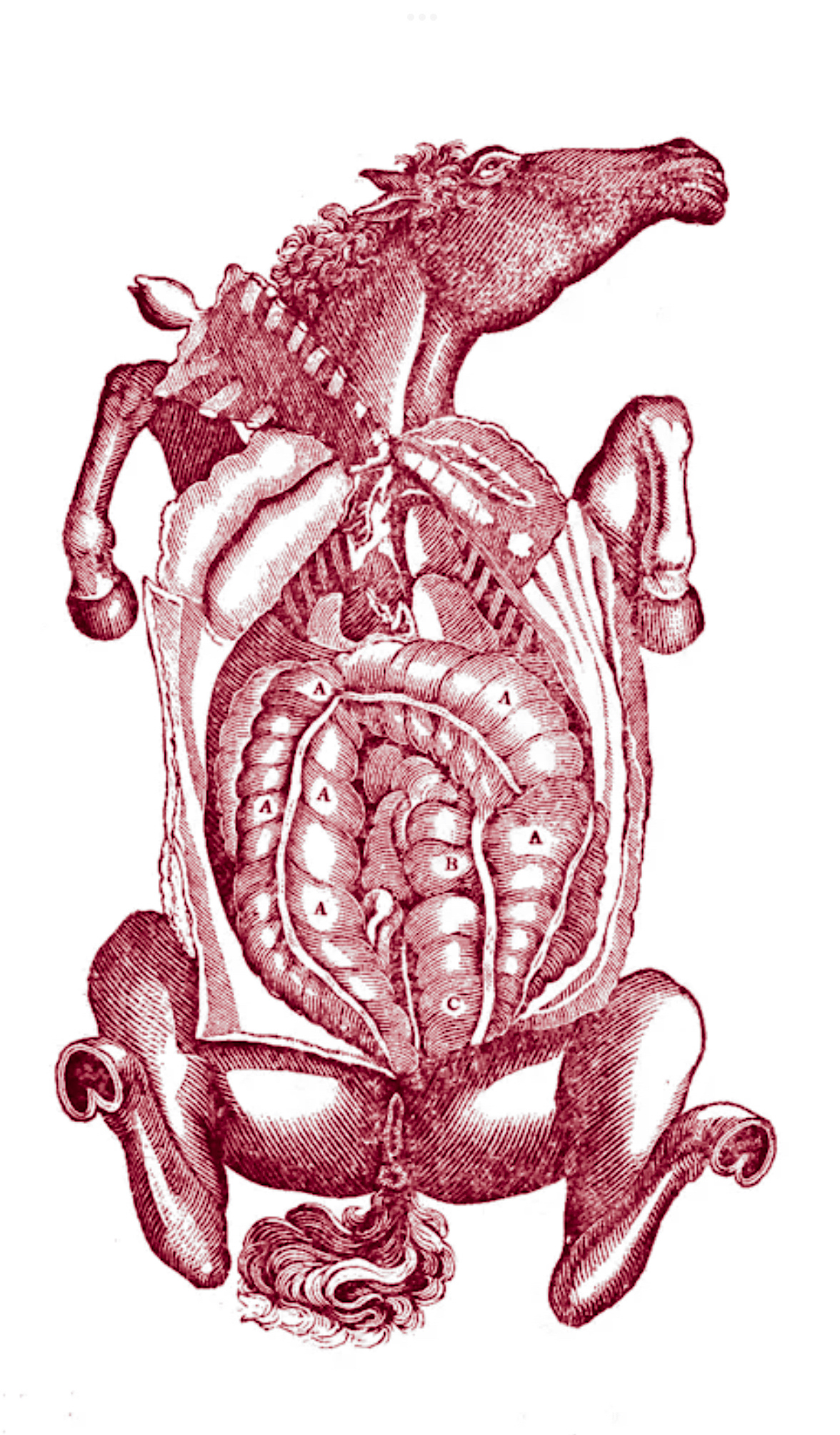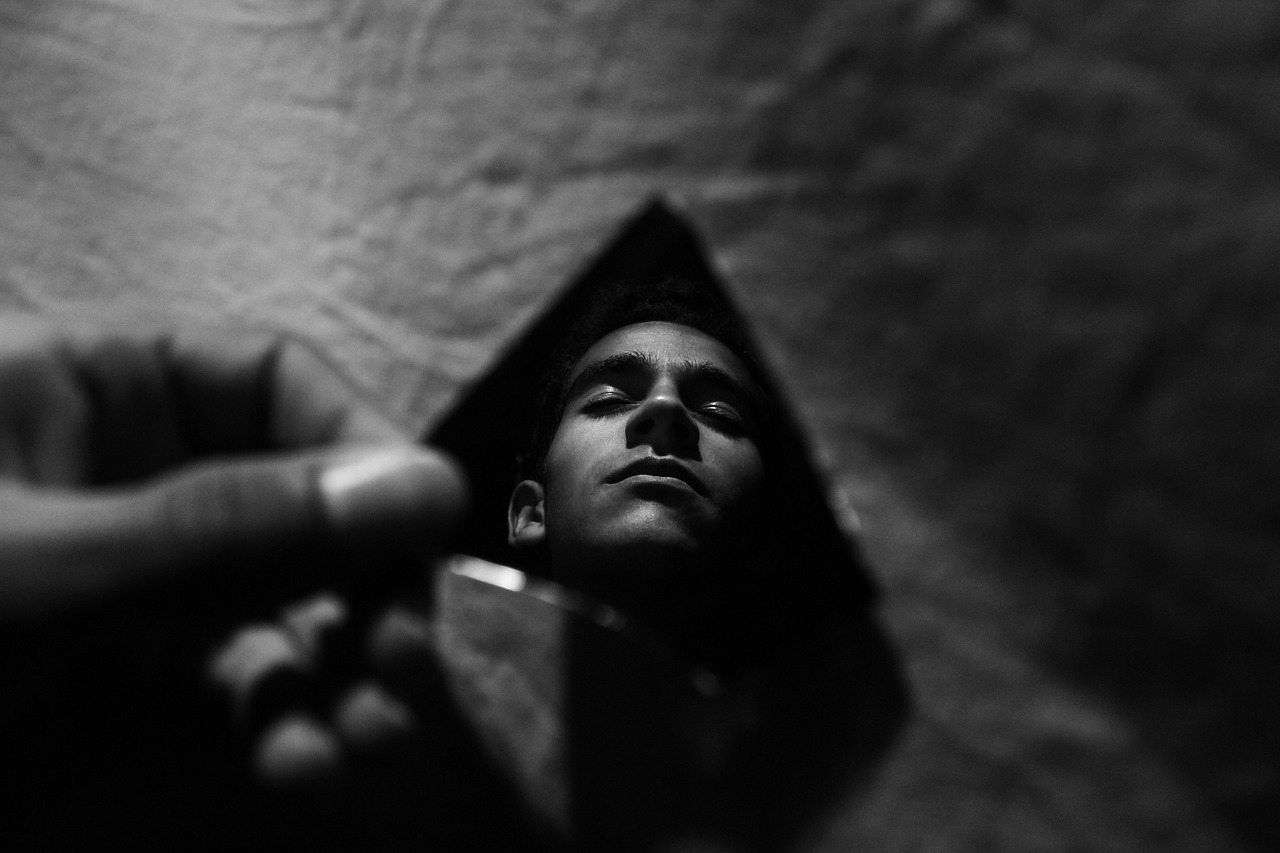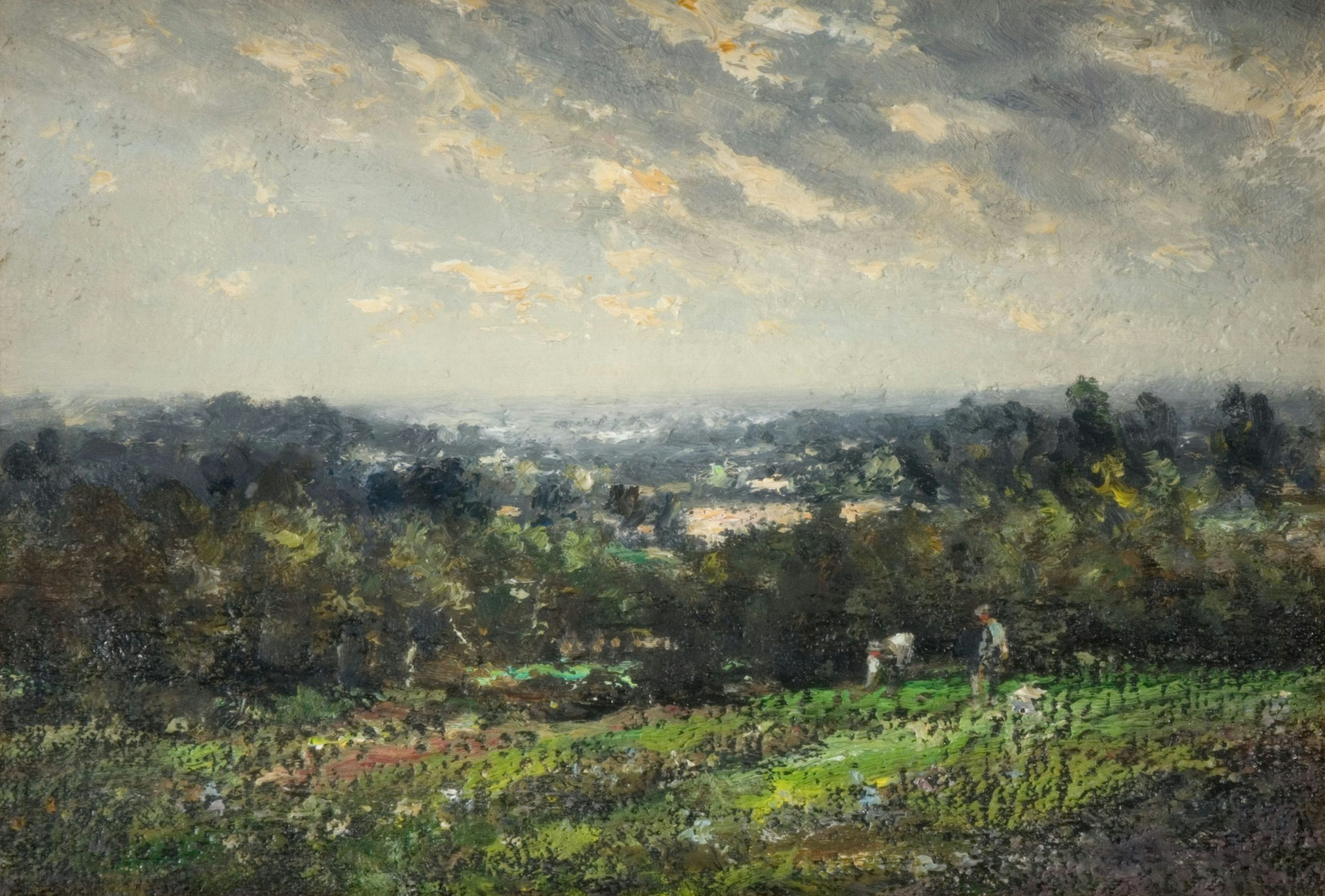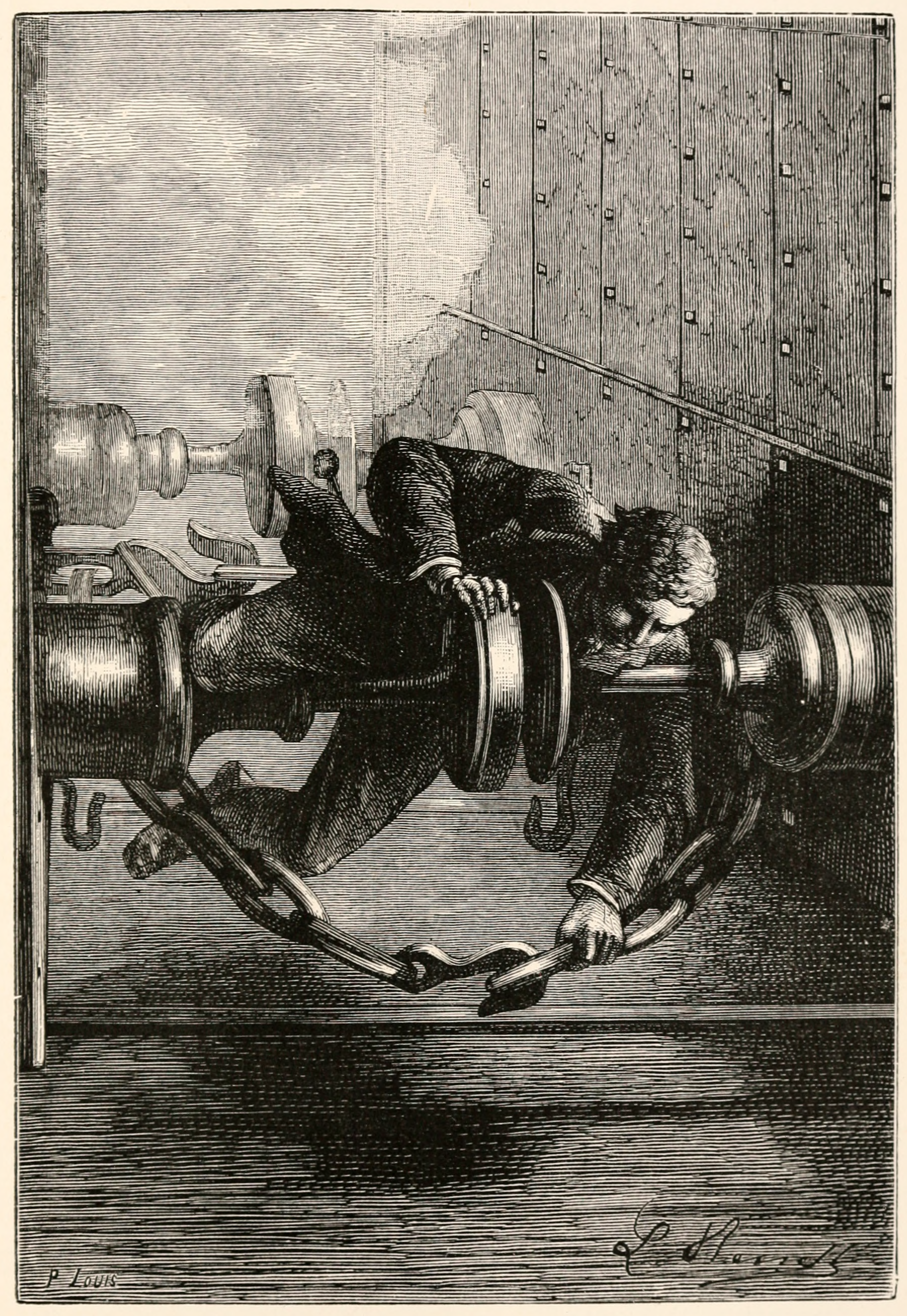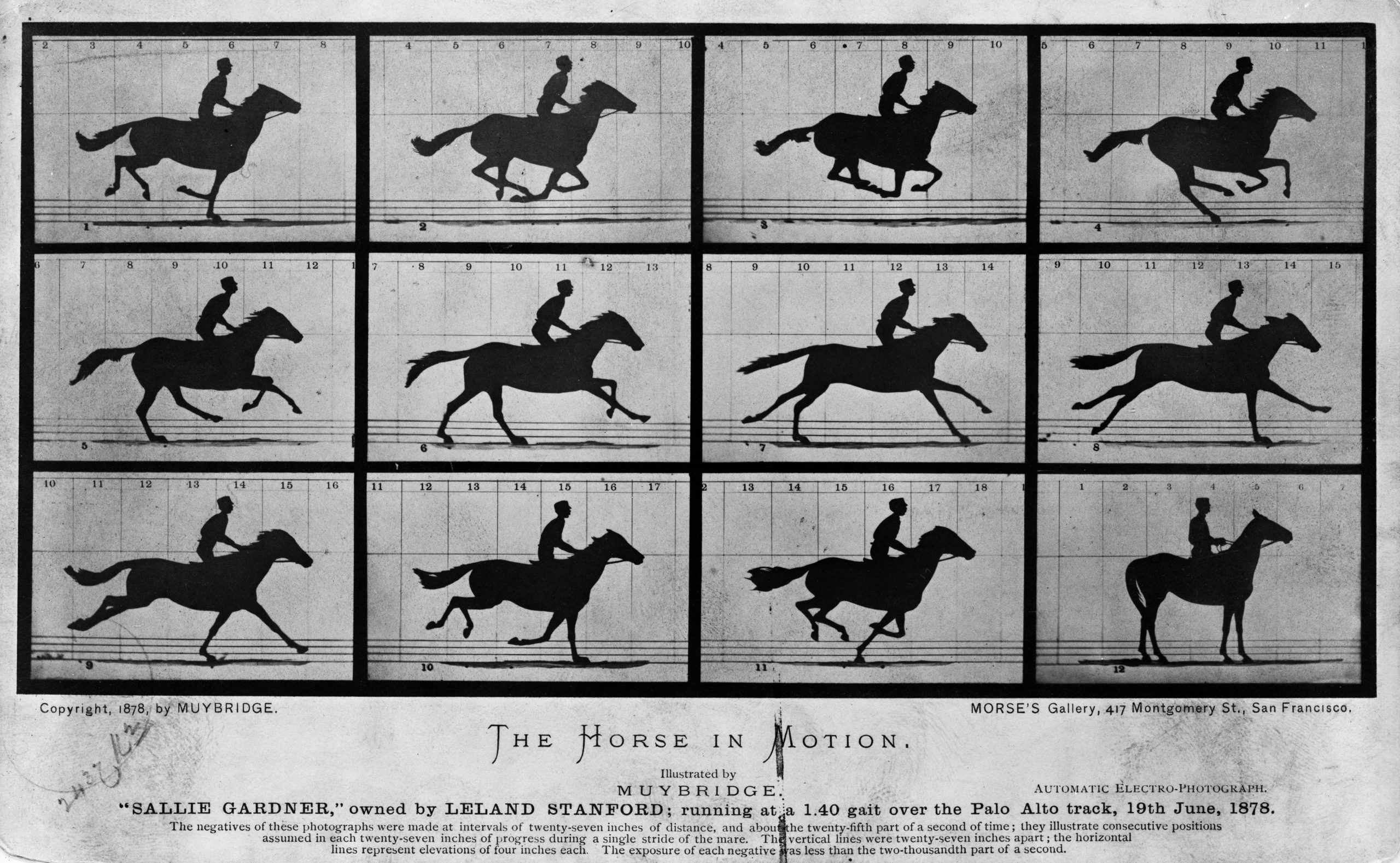
Image by Eadweard Muybridge, via Wikimedia Commons.
by Vish Arora
No medium conjures fantasy quite like cinema, which stitches together light and sound to position the spectator as an active participant in its simulacral constructions of reality. A film, then, doesn’t just depict fantasy; it embodies it, using its visceral immediacy to offer escape. But what happens when a film exposes its own illusion, disclosing the dark mechanisms underlying its phantasmic architecture? David Lynch’s 2001 film Mulholland Drive explores this question with disquieting precision. Through a form that resists coherence and a narrative that challenges unified interpretation, Lynch’s artifice in Mulholland Drive hinges on the nightmarish reality that creates it. At the heart of this exploration is struggling actress Diane Selwyn, who refashions her despair into an archetypical fairytale of Hollywood success. Yet Lynch allows neither Diane nor the audience to immerse themselves in this fantasy. Instead, he repeatedly punctures its surface to challenge the cohesion of Diane’s dream narrative, resulting in an ambiguity that inevitably suspends immersion to invite philosophical reflection. By doing so, he exposes the tenuous border that separates and unites reality with fantasy, the spectator with the screen. As film-philosopher scholar Robert Sinnerbrink suggests, Mulholland Drive exercises philosophy not through illustration, but through form and sensory invocation. However, while Sinnerbrink’s essay “Cinematic Ideas, on David Lynch’s Mulholland Drive” sets up a compelling premise by framing the film as a philosophical text, it stops short of detailing the specific mechanisms that constitute its philosophizing. Extending his inquiry, this essay employs Todd McGowan’s structure of fantasy and Vivian Sobchack’s phenomenology of cinematic embodiment to trace the ways in which Mulholland Drive shatters narrative, obscures form, and begins to ‘think’ beyond narrative confines. Drawing upon Sinnerbrink’s claim, a formal analysis of the film’s structure alongside McGowan and Sobchack’s ideas reveals the juncture where Mulholland Drive transcends fiction to become a self-reflective mode of philosophy.
To frame Mulholland Drive as a philosophical text, we must distinguish between film as a mode of “philosophising,”[1] where philosophy unfolds through its various logics, and film as a convenient visual illustration of existing theoretical frameworks. In Sinnerbrink’s words, the latter constitutes a tendency known as “reductive rationalism”, where cinematic encounters often yield to the seduction of explanation through philosophical metalanguage.[2] Consequently, the film is dismembered and repurposed to support theoretical readings, all while its own philosophical potential is completely undermined. Against this, Sinnerbrink proposes an inverse relation between thought and film, where the film does not illustrate thought but enacts it, staging what he calls “cinematic Ideas”[3]: moving images that abandon narrative to evince a philosophical engagement that arises from their reflexive mode. Mulholland Drive, he argues, employs image and sound—and not narrative—as a means for presenting thought, using ambiguity to encourage reflection instead of inhibiting it. By undertaking this “exercise in mutual reflection,”[4] film and philosophy are treated as cohabitant in their ontological function, and neither is treated as subordinate to the other. Yet, it may be difficult to grasp what “mutual reflection” entails without understanding the specific mechanisms that allow Lynch’s film to be reflective. McGowan’s work, for instance, explores the dialectical relationship between dream and fantasy in Mulholland Drive, while Sobchack’s phenomenological approach helps us understand the cinematic medium as embodied in its own right. When reading the film’s misleading formal construction in tandem with McGowan and Sobchack’s frameworks, we discover that the unsettling affective tendencies of the film are embedded within its very structure. Such a task lays bare the structural and sensory mechanisms of the film’s mode, offering a particularization of Sinnerbrink’s cinematic Ideas. It is through this examination of the film’s narrative artifice and reflexive collapse that we uncover the philosophical potential of Mulholland Drive’s cinematic architecture.
The first half of Mulholland Drive is primarily situated inside Diane’s fantasy. However, this fantasy is far from comfortable, and an unsettling artificiality injects its form from the very onset. Interspersed between a coherent narrative that echoes classical Hollywood conventions are bizarre intrusions that effectively function to displace and disorient the viewer. Sinnerbrink attempts to distinguish between these subjective and objective representations of events but concludes the two to be inseparable.[5] Todd McGowan, however, uses Lacanian psychoanalytic theory to posit that fantasy is not a veil for objectivity, but rather a sustaining structure for reality, one that is always on the verge of unraveling.[6] This sense of an impending collapse pressing against the walls of illusion finds early expression in the Winkie’s diner scene, where a seemingly rational exchange between two men quickly devolves into an absurd encounter with the unknown. The formal elements of this scene are particularly significant, as they infuse it with a strangeness that renders it uncanny long before it reaches its terrifying conclusion. As a frantic Dan recounts his dream to his friend, the mise-en-scène and setting of the daytime diner allow the scene to initially maintain its realism; however, its formal instability makes this pretense feel less believable. The shot-reverse-shot of their conversation, for instance, is manipulated to imbue the sequence with unease. The camera, which appears to hover indeterminately between the two men as they converse, feels unanchored, creating a visual fragility that heightens alongside Dan’s anxiety. As Dan’s friend ushers him to exit the place, his voice is drowned out by the droning soundtrack, signaling the intrusion of fear into the rational cadence of the dialogue. Discreetly placing the audience in Dan’s shoes, the film uses various point-of-view shots to foreground his fearful encounter with the entity behind the diner. This fear inevitably encroaches upon the audience. Using formal elements such as cinematography and sound, Lynch constructs a scene that initially feels self-contained but later gains greater resonance when Diane’s true reality is revealed. At one level, it allows the viewer to retroactively reflect upon this sequence as an unconscious manifestation of Diane’s guilt disrupting her fantasy realm. At another level, the sequence itself becomes a permeable boundary between the subjective and the objective, as its formal elements gradually infuse a seemingly realistic situation with Dan’s compounding fear and a sense of unreality. As McGowan suggests,
Lynch’s eccentricity as a director lies in his proclivity to expose the extreme situations that exist at the heart of everyday reality. As a result, his films depict the structure of fantasy in a much more unadulterated form than is usual in Hollywood […] That said, Lynch’s willingness to embrace the extreme situation that lies within normalcy leads him to produce films that lay bare the functioning of desire and fantasy.[7]
As exemplified by the diner scene, Mulholland Drive does not construct fantasy to shatter it ultimately; rather, its manipulation of fantasy unravels through slow internal deterioration. This extremity that lies dormant within everyday situations, as McGowan suggests, shows that the terrifying event is not an exception to reality but its primordial state. The scene conveys this horror not through simple, formulaic demonstration—placing unease within narrative and contextual logics—but sensory enactment, where the viewer is situated on the threshold between subjective discomfort and objective mundanity.
The dreadful diner scene is far from an isolated instance of severance in an otherwise coherent fantasy. Instead, with the introduction of Betty, “Diane’s fantasmatic ideal ego,”[8] the fantasy takes on a narrative that attempts to overwrite Diane’s memory. Yet even as the guileless, infallible Betty appoints herself as a savior to the elusive starlet Rita (the dream-reconstruction of Camilla Rhodes), an ominous, overarching conspiracy threatens to sabotage her Nancy Drew-style mission. The fantasy that the film constructs is far from seamless, with scenes alluding to the interference of shadowy forces while never explaining their true intentions. One such moment arises during auditions for The Sylvia North Story, where director Adam Kesher is instructed to cast a woman he neither chose nor knows. Like the diner sequence, the scene’s form becomes the primary conveyer of unease. As Adam Kesher watches an actress bearing the name “Camilla Rhodes” perform her audition, two suited men suddenly interrupt. While their identity remains ambiguous, their authority is unmistakable. The diegetic lip synching of the actress is diluted by a low, distorted hum, momentarily suspending the scene’s immersive continuity. Lynch constructs this encounter through extreme close-ups and shallow focus shots, dwarfing Adam against the men who loom above his chair. The sequence ends with Adam reluctantly saying, “This is the girl,” to affirm the actress’ role in the film, submitting to the authority of the two men. By weaving this foreboding sense of external control into the plot, Diane successfully displaces what Sinnerbrink describes as “her terrible guilt over the murder of the real Camilla Rhodes into a convoluted plot involving various malevolent and powerful figures.”[9] McGowan echoes this idea, stating that Diane’s fantasy is embedded in her guilt and suggesting that these characters are “fantasmatic distortions”[10] that allow her to reclaim her sense of power and cope with her conflicting emotions for Camilla. The conspiratorial scheme against Adam Kesher becomes even more absurd with the introduction of Mr. Roque, who is implied to be the arbitrator of this process. Unlike the previous two sequences, which convey a strong sense of spatial grounding despite their surreality, Mr. Roque’s domain is introduced without an establishing shot. He sits alone in the middle of a large, dimly lit room cloaked with curtains. Behind him, his henchman stands almost completely engulfed by shadows. The scene is framed solely through three static shots, each positioning him slightly off-center, emphasizing his tiny frame against a vast, liminal backdrop that lacks spatial anchoring. His speech is limited to monosyllabic questions, and his lack of movement suspends the scene in a space existing outside temporality. In Diane’s fantasy, conspiracy and sabotage are dictated by distant and intangible forces—and enforced by mysterious and veiled authorities. The externalization of control in Lynch’s fantasy framework is recurrent, particularly within this subplot. As McGowan argues:
This role of fantasy becomes apparent in the way that fragments of experience from the second part of Mulholland Drive are elaborated on in the first part. This process is crucial to the subject’s ability to make sense of a situation: we understand and discover meaning because fantasy provides the background for fragmentary experience.[11]
The conspiracy under Roque functions as a manufactured causality, allowing Diane to deflect the unbearable arbitrariness of her truth onto operators outside of herself. By placing control into the hands of powerful evildoers, the fantasy assigns Diane’s guilt to an elaborate conspiratorial scheme. At the same time, this chimerical reconstruction is far from intact, and fails to fully shield her from the truth. Unlike the second half of the film, where time and logical coherence completely disintegrate, Betty progresses through the fantasy realm while still experiencing temporality.[12] The conspiracy unfolds parallel to Betty’s personal storyline, and the two plots never seem to converge or intersect in a substantial way. Nevertheless, Diane’s trauma bleeds into the scaffolds of the fantasy sequence, even if Betty remains oblivious to its presence. This intrusion of repressed memory into fantasy is not incidental, according to McGowan. Instead, he uses this tension to highlight the greater horror that fantasy veils: the unending process of repetition.[13] Chronology and narrative, thus, do not merely function as constituents of illusion. Rather, it is through their subterfuge that Diane shrouds her repressed guilt, which would otherwise be immutable. By confining Betty to the illusion of temporality, Diane reconstructs time to escape the “horrors of repetition”[14] imposed by memory. This dialectical structure of fantasy becomes its very denial and signals a forewarning to the illusion’s eventual undoing.
While the first part of Mulholland Drive deliberately bungles its performance of objectivity, it still subscribes to the logical framework of illusion. The various side plots, while disjointed from causality, do not directly challenge the veracity of Diane’s dream architecture. However, when retroactively tracing moments from the first part after witnessing the second, the invisible thresholds marked throughout the dream sequence become visible. Louise Bonner’s jarring appearance is one such rupture. Veiled in black and framed in harsh lighting, she arrives uninvited to Betty and Rita’s Hollywood sanctuary with an urgency that never receives a narrative explanation. Louise’s cryptic warning—“Someone is in trouble”—and her refusal to acknowledge Betty’s name are an unnerving confrontation of Betty’s unquestioned fantasy. The scene’s mise-en-scène signals this dissonance by visually depicting reality intruding upon fantasy. Once again, Lynch employs formal techniques that disrupt the narrative coherence of the scene and instill it with disconcerting ambiguity. Darkened point-of-view shots of Louise approaching the door are cross-cut against Betty and Rita’s softly lit indoor space. As soon as Louise knocks, the ominous droning score intensifies, signaling an interference that surpasses narrative. Betty and Louise’s interaction is framed in a similarly unsettling style: extreme close-up shots, faces in shallow focus, and shadows that almost engulf Betty completely. The mesh screen between the two is inconspicuous, yet Louise’s hand clings to it throughout their conversation as she ominously voices the threat of danger. The hidden door becomes noticeable only when Coco opens it later in the scene, shattering the audience’s illusion of visual coherence. Lynch visually draws our attention to the once seamless border between fantasy and reality, now flickering into view. In the chronology of Diane’s fantasy, Louise’s presence may appear as abrupt and inexplicable. Yet her desperate confrontation with Betty rattles Diane’s illusion, foreshadowing its collapse later in the film. Betty and Rita’s discovery of the corpse marks the beginning of this collapse, bringing Diane to the site of trauma that the dream was constructed to repress. McGowan points out the paradoxical nature of this moment, suggesting that “the very narrative structure of the fantasy—its mystery story—leads Betty and Rita to the point of the origin of the fantasy, the traumatic point of nonsense that does not fit within the fantasy structure.”[15] Beyond narrative function, the corpse also becomes a literal embodiment of the threshold that unravels Diane’s fantasy, leading to its eventual dissolution. In crossing this threshold, the audience grapples not just with the collapse of meaning, but also with coherence. As the subjective and objective interweave to become inseparable, they engender a new layer of reflexivity for the film – a reflexivity that invites the audience into the film’s undoing.
No longer secured by the pretense of Hollywood convention, the film’s disintegration surpasses its diegesis. This effect extends not only to the interior architecture of Diane’s world, but also to the audience. In the events that follow the corpse’s revelation, the film’s formal choices begin to mirror the very texture of perceptual breakdown. Narrative subversion is, therefore, no longer the scope of Mulholland Drive’s exploration. By moving past fantasy, the film enters a realm of self-interrogation where it puts its own world into question. Film theorist Vivian Sobchack describes this reflexiveness as the “interoceptive image,”[16] asserting that filmic representation is not meant solely for visual consumption. Instead, it replicates the viewer’s internal world. In other words, the film’s ‘eyes’ become an extension of the spectator’s perspective, allowing each viewer to experience the cinematic body using their own intraspective subjectivity. Take the Club Silencio scene for instance, where affective impact is not reducible to plot; it is transcendentally felt. “No hay Banda,” the magician exclaims as Betty and Diane walk into the surreal underground theatre—“there is no band,” he reiterates. These words resound beyond the screen: not only are they a nod to Diane’s illusion, but also a moment of awakening for the audience entangled within the same deception. Yet, the magician’s insistence on fabrication is contradicted by the scene’s emotional weight. As Rebekah Del Rio’s haunting song echoes across the theatre, Betty and Rita burst into tears. In a film famous for its disorienting plot and somnambulant pacing, this moment employs striking lucidity: Rebekah’s voice cuts through the silence, and the camera lingers on the pair’s reactions, refusing to undermine the song’s emotional impact. The singer collapses on stage mid-song, but the soundtrack continues playing in the background as she is carried off the stage. Formally, the film insists on artificiality, yet the affective resonance of the Club Silencio scene is regarded by many, including Sinnerbrink, as its most memorable—“and yet we hear a band”, as the magician suggests.[17] It is in this formal uncoupling of image and sound, sensation and sense, that Lynch implicates the viewer’s perceptual relation to film. As Sobchack writes, “A film is an act of seeing which makes itself visible, an act of hearing which makes itself heard, an act of physical and reflective movement which makes itself felt and understood”[18] and Lynch uses this quality not just to show us illusion, but to situate us within it. The film’s meta-exposition of illusion also complicates our notions of the ‘real’ and ‘unreal’ as binary spaces, suggesting that they are inextricably linked.
Instead of resolving this dialectic between fantasy and reality, the film’s final act presents a fragmented, hallucinatory alternative to a clean ending. Sobriety never follows Diane into wakefulness, as fragments of her fantasy mutate into her ‘real’ world creating what can only be described as a frightening visual medley. The sequences are fabricated using jarring cuts, flashbacks, and “source material[s]”[19] for the dream sequence, with apparitions of the murdered Camilla Rhodes haunting Diane’s conscience. The phantasmagorical images adhere to no apparent logic, and subjectivity and objectivity present no apparent boundaries. As Diane’s hallucinations reach their crescendo, her fantasy saturates her reality, compelling her to end her own life. The image of her lifeless body evinces a striking palimpsest of her immaterial fantasy and repressed material reality. The closing montage unravels as a return of her fragmented dreamscapes: the blue lighting of Club Silencio, the entity behind Winkie’s diner, the angelic superimpositions of Betty and Rita all collapsing into the empty theatre and the final whisper, “Silencio.” With ‘reality’ completely overridden as a mediator of fantasy, the film assumes a subjectivity of its own, independent of cinematic convention. Sobchack writes that film “lives its own perceptive and intentional life for us and before us” and in doing so, “it inscribes its own embodied and contingent response to the world […] in the world we see.”[20] This idea is exemplified by Mulholland Drive, where the collapse of narrative coherence signals an intensification of the sensuous and affective experience. Therefore, the film’s philosophy is enlivened not through exposition or illustration, but through its own “visual body.”[21] This idea of formal embodiment implies that film ‘thinks’ in ways that are independent from the external creativity that brings it into existence. By drawing attention to film’s corporeal qualities, Sobchack’s ideas substantiate Sinnerbrink’s assertion that “film itself is a kind of philosophizing,”[22] highlighting the cinematic medium’s inherent potential for self-reflection.
In Mulholland Drive, fantasy is not an inverted, hyperbolized performance of reality, but nor does it exist outside of it. Instead of neatly pulling the curtains of dream to expose the frightful architecture of truth, the film refuses to adhere to the comfort of such binaries. In denying his audience coherence, Lynch reframes the concept of cinematic engagement from passive consumption to a sensory experience that transcends its medium. Diane’s fantasy is neither a moral allegory nor a psychological case study. It is also not a visual illustration, one that purposely enacts a complex philosophical hypothesis in motion. In closely tracing its structure, we discover that its undoing silently regulated its eventual destruction from the very outset. The boundaries that mediated fantasy and its hallucinatory afterworld were thus never transgressed; they dissolved into each other. This dissolution of barriers goes beyond the film’s diegesis, weakening the very threshold that separates the spectator from the screen. In this symbiotic descent, the body—both the viewer’s and Diane’s—is implicated. And yet, this cinematic reflexivity transforms the visceral undoing of the film into something generative. If Mulholland Drive fails in upholding fantasy, it does so by pushing itself to a point where artifice becomes transparent, and form begins to think. In the end, the film refuses to illuminate us with answers. But it is precisely this ambiguity that haunts Mulholland Drive’s viewers long after the final scene, leaving them not in darkness, but in the spectral light of thought.
Endnotes
[1] Robert Sinnerbrink, “Cinematic Ideas, on David Lynch’s Mulholland Drive,” Film-Philosophy 9, no. 4 (2018): NP.
[2] Sinnerbrink, “Mulholland Drive.”
[3] Sinnerbrink, “Mulholland Drive.”
[4] Sinnerbrink, “Mulholland Drive.”
[5] Sinnerbrink, “Mulholland Drive.”
[6] Todd McGowan, “Lost on Mulholland Drive: Navigating David Lynch’s Panegyric to Hollywood,” Cinema Journal 43, no. 2 (2004): 68.
[7] McGowan, “Lost on Mulholland Drive,” 69.
[8] McGowan, “Lost on Mulholland Drive,” 77.
[9] Sinnerbrink, “Mulholland Drive.”
[10] McGowan, “Lost on Mulholland Drive,” 78.
[11] McGowan, “Lost on Mulholland Drive,” 73–74.
[12] McGowan, “Lost on Mulholland Drive,” 73.
[13] McGowan, “Lost on Mulholland Drive,” 73.
[14] McGowan, “Lost on Mulholland Drive,” 73.
[15] McGowan, “Lost on Mulholland Drive,” 74.
[16] Vivian Sobchack, “The Address of the Eye: A Semiotic Phenomenology of Cinematic Embodiment” (Doctoral Dissertation, Carbondale, Southern Illinois University at Carbondale, 1984), 227–28, https://www.proquest.com/dissertations-theses/address-eye-semiotic-phenomenology-cinem atic/docview/303327545/se-2?accountid=14656.
[17] Sinnerbrink, “Mulholland Drive.”
[18] Sobchack, “Address of the Eye,” 10.
[19] Sinnerbrink, “Mulholland Drive.”
[20] Sobchack, “Address of the Eye,” 313.
[21] Sobchack, “Address of the Eye,” 227.
[22] Sinnerbrink, “Mulholland Drive.”
Works Cited
McGowan, Todd. “Lost on Mulholland Drive: Navigating David Lynch’s Panegyric to Hollywood.” Cinema Journal 43, no. 2 (2004): 67–89.
Sinnerbrink, Robert. “Cinematic Ideas, on David Lynch’s Mulholland Drive.” Film-Philosophy 9, no. 4 (2018): NP.
Sobchack, Vivian. “The Address of the Eye: A Semiotic Phenomenology of Cinematic Embodiment.” Doctoral Dissertation, Southern Illinois University at Carbondale, 1984. https://www.proquest.com/dissertations-theses/address-eye-semiotic-phenomenology-cinem atic/docview/303327545/se-2?accountid=14656.




